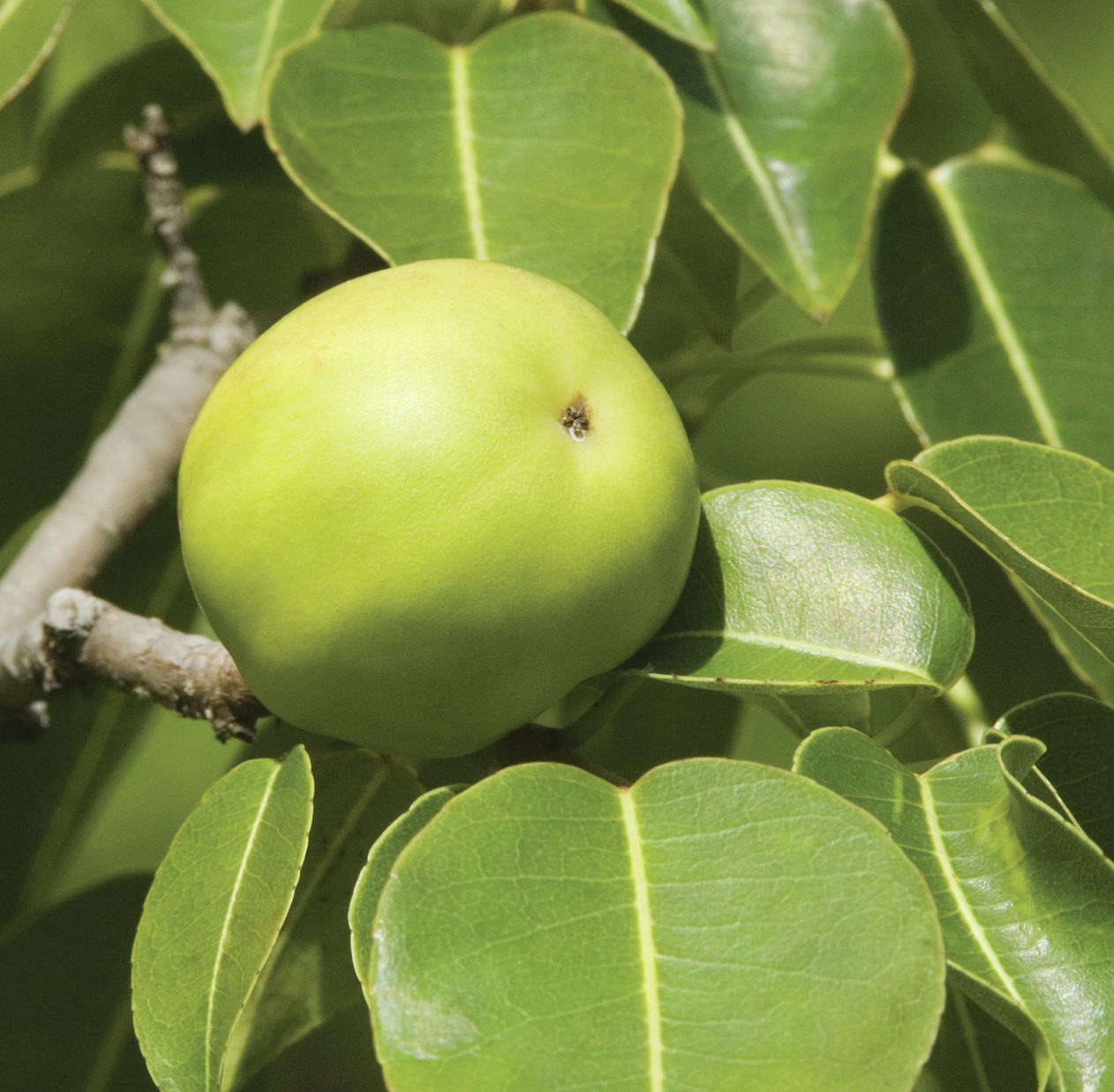
The Manchineel tree looks inviting, with its shiny leaves and sweetsmelling, sweet-tasting, apple-like fruit. But this widespread tropical plant has been described as the most poisonous tree in the world. Unsuspecting tourists have died after eating the apples, and the toxins are not confined to the fruit. During rainfall, or when damaged, Hippomane mancinella releases milky latex, which is an extreme irritant. Caribbean natives used the latex to make poisonous arrows and the leaves to poison water supplies; they tied their enemies to the tree trunk for a tortuous punishment. If the bark is burnt, the smoke can cause blindness.
The chemicals are produced by secretory cells in the stems, fruit, leaves and other organs in the plant. The toxins include phorbols and daphnanes — they are responsible for blistering of the skin and swelling of the throat. They are also carcinogens. In the plants that grow in North Africa, the drug euphorbium has also been found in the xylem. The tree is in the Euphorbiaceae, a family that includes the Christmas star plant (Poinsettia) and spurge, both of which share the ability to produce irritant latex.
Your organisation does not have access to this article.
Sign up today to give your students the edge they need to achieve their best grades with subject expertise
Subscribe




